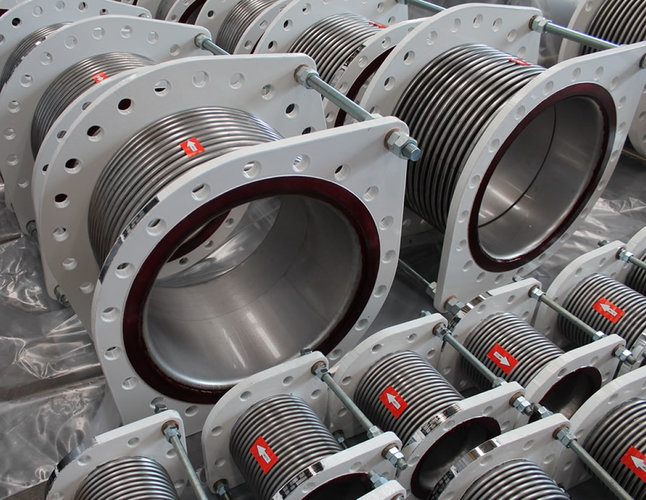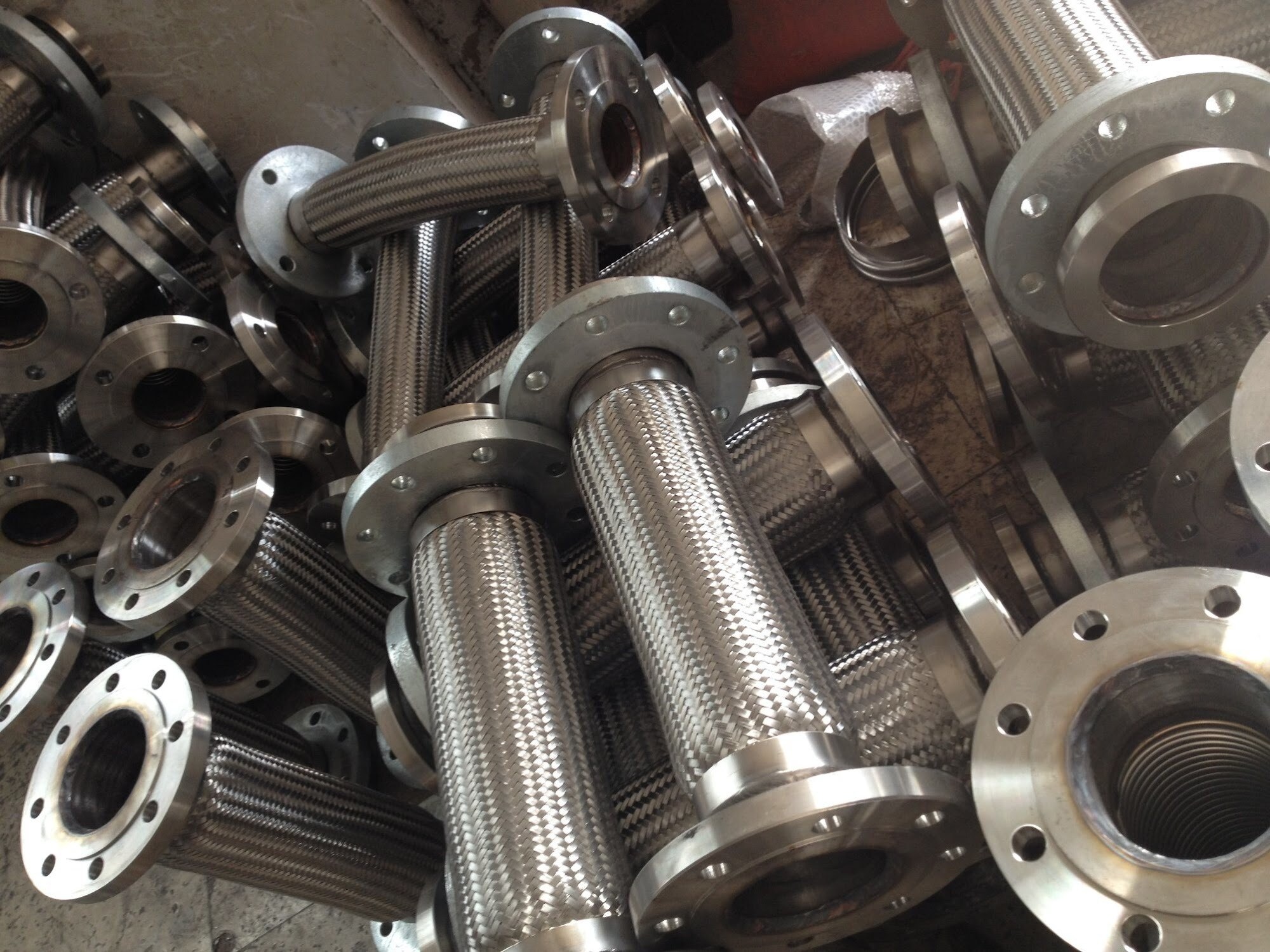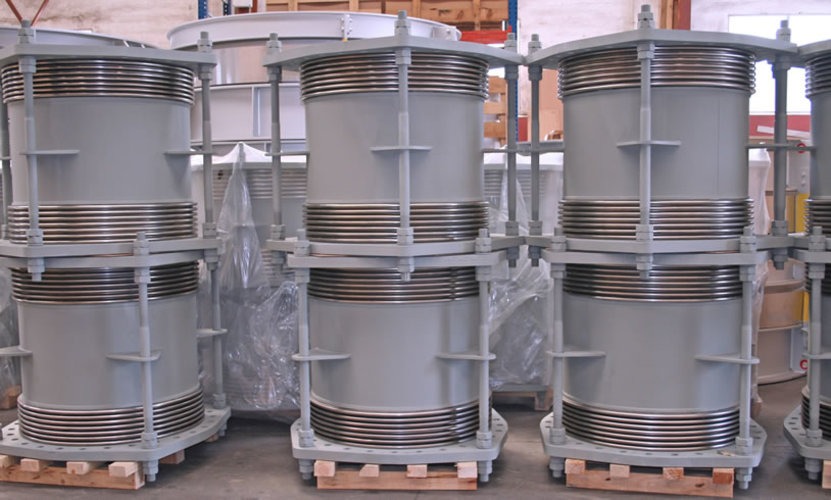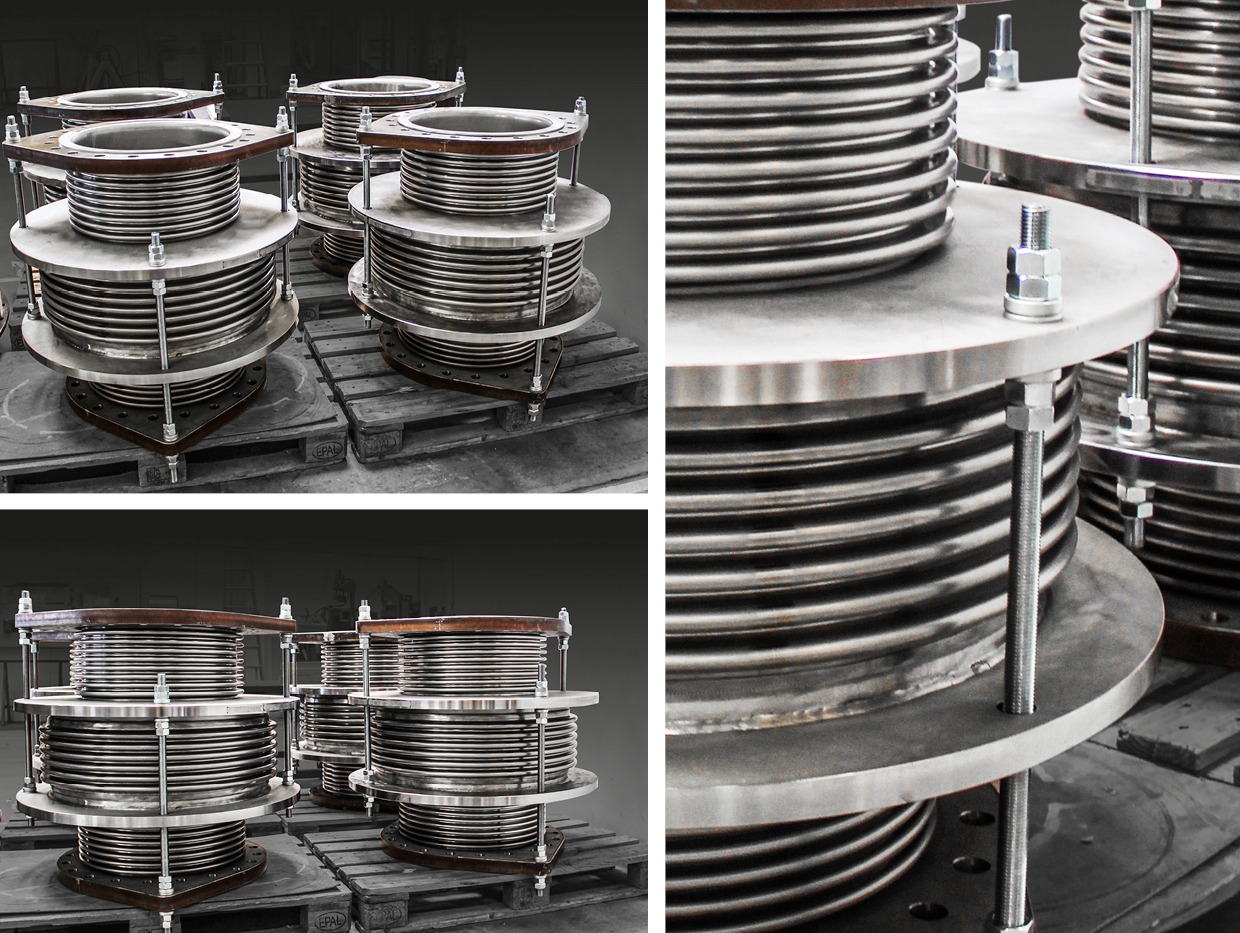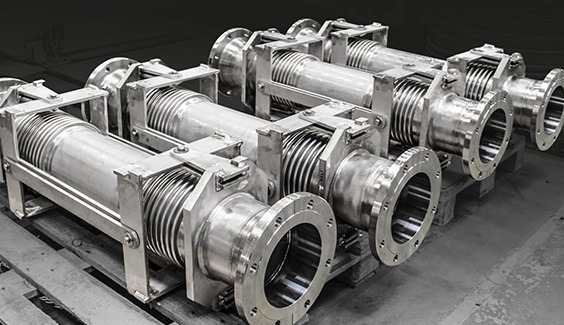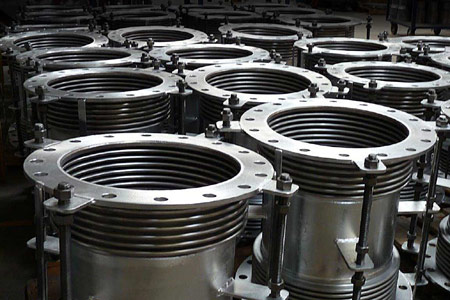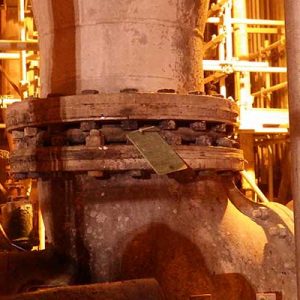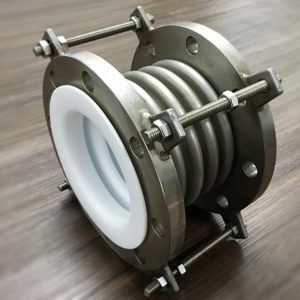Metal bellows expansion joints are used as components in piping or as parts of pressure vessels.
An expansion joint is any apparatus containing one or more metal bellows used to absorb dimensional changes such as those caused by thermal expansion or contraction of a pipeline, duct, or vessel and to absorb vibrations caused by engines, pumps, motors, etc.
In other words, a metal expansion joint is a device primarily formed by flexible bellows used to absorb movements in a piping system while containing pressure and a medium running through it.
The key element of an expansion joint is the bellows. The bellows is a flexible element consisting of one or more corrugations and the end tangents.
A corrugation (convolution) is the flexible unit of a bellows and end tangents are the straight un-corrugated portions at the ends of a bellows.
The flexibility of the bellows is derived from the inherent flexibility of the corrugation given its shape and its own design.
In the design and construction of the bellows, in addition to considering that they must be flexible and such flexibility must be controlled, other operating parameters such as pressure, temperature and chemical resistance to fluid passing through them must be taken into account.
